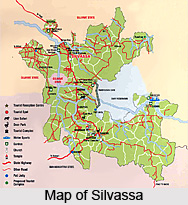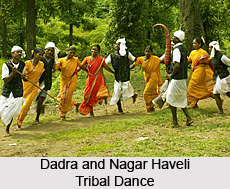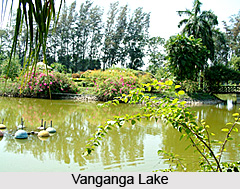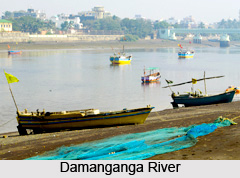 Silvassa has its name derived from a Portuguese word, known as "Silva" which means wood. The tall trees on the outskirts of the town exemplify the meaning of Silvassa. Apart from being known as a Portuguese colony, Silvassa is known for its tribal population. These tribals stay on the outskirts of Silvassa in little Kiosks. Chillum or the hands made smoking pipes of these tribals are very famous and characteristic to Silvassa.
Silvassa has its name derived from a Portuguese word, known as "Silva" which means wood. The tall trees on the outskirts of the town exemplify the meaning of Silvassa. Apart from being known as a Portuguese colony, Silvassa is known for its tribal population. These tribals stay on the outskirts of Silvassa in little Kiosks. Chillum or the hands made smoking pipes of these tribals are very famous and characteristic to Silvassa.
History
A Treaty Between Portuguese & Marathas gave birth to the city of Dadra & Nagar Haveli on 17th of December` 1779. The Marathas in Return of their friendship assigned 72 villages to Portuguese and this group of Villages came to be known as Dadra & Nagar Haveli. The Portuguese ruled this territory until its liberation on 2 August 1954. Subsequently the administration was carried on for some time by an administrator. The territory was merged with the Indian Union on 11 August 1961 as a Union Territory.
Geography
The territory is surrounded by Valsad District of Gujarat on the West, North and East and the South and southeast is surrounded by Thane District of Maharashtra. Towards the Northeast and East it has a hilly terrain surrounded by the ranges of Sahyadri Mountains.
Silvassa is located at 20.27° N 73.02° E It has an average elevation of 32 metres.It Receives an annual rainfall 2500 Mm. The Union Territory comprises of two enclaves, viz Dadra & Nagar Haveli having 72 villages with an area of 491sq.km as per the Surveyor General of India. Silvassa.
Economy
Silvassa is the economic center of the territory. Economic activities in this territory were confined to forest and agriculture sector in the sixties and seventies with a few craftsman engaged in leatherwork, carpentry and basket making. Diversification in other sectors started in early eighties when the government announced a fifteen-year Sales Tax benefit to industrial entrepreneur who establish units in the territory. This sectoral diversification was given a further boost in early nineties by providing more incentives such as the Income Tax benefits etc.
Silvassa has large number of factories and industries providing significant revenue, which allows the city to maintain a low level of Taxation.
Sivassa is primarily an agricultural city and produces rice, pulses, and fruit crops.
 Government
Government
A collector, who belongs to the Indian administrative division, administers Silvassa city.
Transport
By Rail: The nearest Railway Station Vapi is about 17 kms. where road transport is easily available.
By Road: From Mumbai - Ahmedabad N.H.No.8, Silvassa, the Capital Town of DNH, is about 180 kms.
From Mumbai-Silvassa is about 120 kms from Surat and about 14 kms
Demographics
As of 2001India census Silvassa had a population of 21,890. Males constitute 57% and females 43% of the population. 15% of the population is under 6 years of age. Silvassa has an average literacy rate of 75%, higher than the national average of 59.5%: male literacy is 80%, and female literacy is 68%.
Culture
Marathi and Gujarati are the main languages spoken. Silvassa is also cosidered to be the home of Warli Culture. Warli is the language spoken by the Warli people which is basically a mixture of Marathiand Gujrati languages with a local twist.Silvassa also has a considerable number of Christianswho are mainly Portugueseas the Union Territory of Dadra and Nagar Haveli.
The important festivals of the city are Id-Ul-Zuha, Muharram, Vasant Pachami, Mahasivhratri, Holi, Gudi Padwa, Ram Navami, Mahavir Jayanti, Good Friday, Easter, Budha Purnima, Guru Purnima, Nag Panchami, Raksha Bandhan, Janmashtami, Ganesh Chaturthi, Navratri, Dussehra, Deepawali , Id-Ul-Fiter, Guru parab, Christmas.
 Shrines of Silvassa:
Shrines of Silvassa:
There are several old shrines in Dadra & Nagar Haveli. Bindrabin, the historic temple at Lord Shiva locally known as Tadkeshwara is situated amidst. Averts on the bank at river Sakartod. People from far off places visit to pray and seek blessings. One of the many fascinating sights you see in Dadra & Nagar Haveli is a glorious century old chapel, the church of Our Lady of piety, built way back in 1889, by the Portuguese.
Visiting Places of Silvasa:
The Vanganga Lake
The Vanganga Lake and Island Garden is a beautiful lake garden situated at a distance of 5 km from the capital city of Silvassa. The rustic wooden bridges, the flowers, jogging paths, thatched huts, and paddleboats-all constitute an ideal ambiance for the tourists.
Khanvel
A 20 km. drive from Khanvel is Dudhni where the large waterfront of river Damanganga provides breathtaking view of the water spread over Madhuban Dam. The luxurious tents pitched right near the bank provide a countryside experience.
Hirwa Van
On Silvassa-Dadra Road is Hirwa Van, a beautiful garden with roaring waterfalls, misty cascades, rustic stonewalls, twin arches, tiny kiosks and springy lawns interspersed with islands of flowers-truly a visitors delight.
Haveli
The history of Dadra and Nagar Haveli is carved in wood and stone in the monuments from the past that dot the land.
The Tribal Cultural Museum
 The Tribal Cultural Museum at Silvassa is houses a good collection of masks, musical apparatus, fishing gadgets and life-size statues.
The Tribal Cultural Museum at Silvassa is houses a good collection of masks, musical apparatus, fishing gadgets and life-size statues.
Education
Govt Primary and Secondary schools in Dadra and Nagar Haveli are including Father Agnelo School and Lions School.
Dr BBA Govt. Polytechnic (Engineering Collage) at Karad is the first college in the Union Territory.
Recently Silvassa has become the hub for Education.And a new colledge has been started named SSR college of arts,science and commerce it is affiliated to Pune University.
For complete business listing of Silvassa visit Silvassa Yellowpages



















